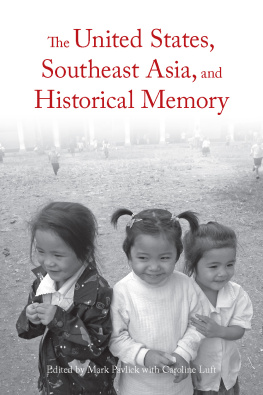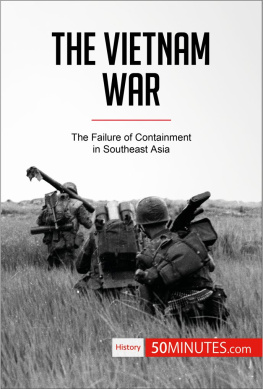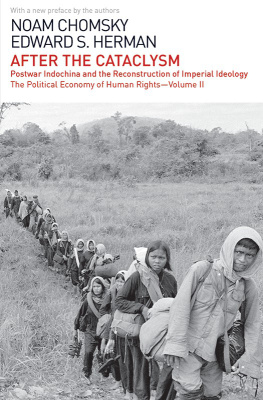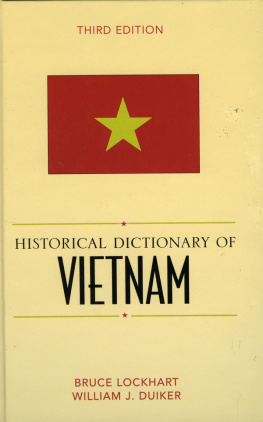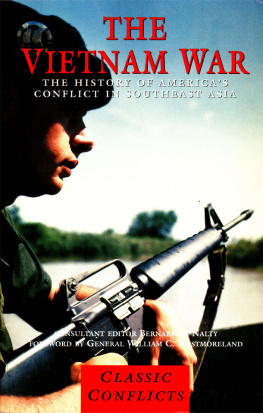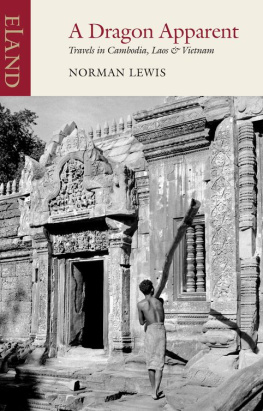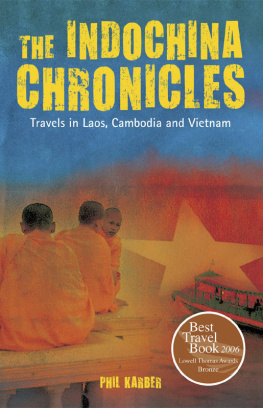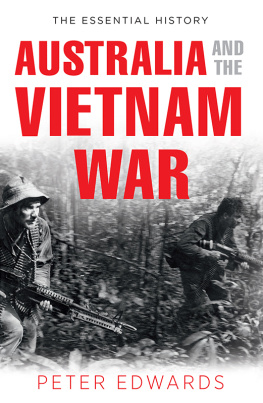Chapter 1
War Crimes in Indochina and Our Troubled National Soul
Fred Branfman
Corpses float on the water, dry in the field, on the city rooftops, on the winding streets. Corpses lie abandoned under the eaves of the pagoda, on the road to the city churches, on the floors of deserted houses. Oh, springtime, corpses will nourish the plowed soil. Oh, Vietnam, corpses will lend themselves to the soil of tomorrow.
Trinh Cong Son, Vietnams best-known musician
War Crimes: Namely violation of the law or customs of war (including) murder, ill treatment... and the wanton destruction of towns and villages. Crimes Against Humanity: Namely, murder... and other inhuman acts committed against any civilian population.
Indictment of Nazi defendants, Nuremberg Trials, 1945
I committed the same kinds of atrocities as thousands of others in that I shot in free-fire zones, fired .50-caliber machine bullets, used harass-and
interdiction fire, joined in search-and-destroy missions, and burned villages. All of these acts are contrary to the laws of the Geneva Convention, and all were ordered as written, established policies from the top down, and the men who ordered this are war criminals.
2004 US presidential candidate John Kerry, in 1971 testimony to Congress
A Deep Wound at the Core of Our National Soul
We live in a time in which truth has become increasingly irrelevant. Reality is indistinguishable from spin, not only from politicians but also from once-trusted sports figures, church leaders, and business executives. Statements and assertions are no longer backed up by evidence. Facts are no longer treated as facts. Words have come to mean their opposite. It seems almost pointless to note the latest untruths: who has the time to research the facts amid the welter of accusations, attacks, ripostes, and counterattacks?
There are, however, certain lies so monstrous, so odious, so malignant, and so significant that they cry out to heaven for rectification. One of these is the official lie that American leaders were not guilty in Indochina of some of the worst war crimes since World War II. This lie is not merely a matter for historians. It was at the heart of the 2008 presidential race, in which one candidate ran on his Vietnam War record, just as in the 2004 presidential race. This lie has poisoned American politics and damaged Americas standing in the world for the past three decades, causing America frequently to repeat the same mistakes it made in Indochina and denying Americas youth the truth of their own history. Furthermore, this lie will continue to damage America until it is exposed and rectified.
International laws on war deal with two basic issues: 1) preventing aggressive war, that is, wars not fought in genuine self-defense; and 2) the protection of civilians once war has begun. However one feels about the first issueAmericas right to have intervened in Indochinano sane person could deny that once the United States began to wage war in Indochina it flagrantly ignored the laws of war seeking to protect noncombatants.
The United States waged massive bombing and artillery campaigns that did not distinguish between innocent civilians and enemy soldiers. US leaders dropped 6,727,084 tons of bombs on a population of sixty million to seventy million people in Indochina, more than triple the tonnage it dropped in the combined European and Pacific Theaters in World War II. The United States also conducted ground artillery bombardment of Indochina on an equally massive scale. As a result, whatever their intent, US leaders killed countless noncombatants, wounded and made homeless an officially estimated 18.7 million people, and laid waste to vast areas of farmland and forest that are still unusable due to unexploded bombs and the lingering effects of toxic chemical defoliants.
OFFICIALLY ESTIMATED BOMBING AND CASUALTY STATISTICS
FOR THE WARS IN INDOCHINA, 196175
Note: The figures below are official US estimates of bombing tonnage dropped and casualties and refugees created during the wars in Indochina from 1961 to 1975. Please note that these figures do not include the tremendous amount of ground munitions used, and seriously underestimate the total number of Indochinese who died during the war. These figures were compiled by the Indochina Resource Center from official sources, and were placed in the Congressional Record by Senator James Abourezk on May 11, 1975. The reader is referred to these pages for a more detailed explanation of how these figures were compiled.
US BOMBING TONNAGE DROPPED ON INDOCHINA*
SOUTH VIETNAM (6/641/27/73) 3,223,553
NORTH VIETNAM (8/641/27/73) 881,302
CAMBODIA (3/698/15/73) 539,129
LAOS (6/644/73) 2,083,100
(Northern Laos: 320,722)
(Southern Laos: 1,762,378)
TOTAL US BOMBING TONNAGE, INDOCHINA6,727,084
(196468, Johnson/McNamara/Clifford: 2,742,521)
(196973, Nixon/Kissinger: 3,984,563)
* From official Pentagon figures.
US AERIAL BOMBING SORTIES OVER INDOCHINA**
SOUTH VIETNAM (6/641/27/73) 946,142
NORTH VIETNAM (8/641/27/73) 362,542
CAMBODIA (3/698/15/73)49,640
LAOS (6/644/73) 541,344
TOTAL US BOMBING SORTIES, INDOCHINA1,899,668
** From official Pentagon figures.
OFFICIALLY ESTIMATED DEATHS OF INDOCHINESE***
CIVILIANS, South Vietnam430,000
CIVILIANS, North Vietnam185,000
ARVN (Army of South Vietnam) 221,041
PRG/DRV (Vietcong, North Vietnamese)1,064,656
CIVILIAN AND MILITARY, Laoshundreds of thousands
CIVILIAN AND MILITARY, Cambodiahundreds of thousands
TOTAL INDOCHINESE KILLEDmore than 2 million
* ** These official figures come from the Pentagon and US Senate Subcommittee on Refugees. They show more than 2 million Indochinese killed in Indochina. No serious estimates have been made for the number of those killed and wounded in Laos and Cambodia, but most observers estimate the number in the hundreds of thousands.
OFFICIALLY ESTIMATED INDOCHINESE, WOUNDED
AND MADE HOMELESS, 196175
WOUNDED, South Vietnam, Civilians1,050,000
WOUNDED, South Vietnam, Military2,205,523
WOUNDED (Cambodia, Laos, North Vietnam)300,000
(subtotal, wounded: 3,555,523)
REFUGEES, South Vietnam11,683,000
REFUGEES, Cambodia3,000,000
REFUGEES, Laos700,000
(subtotal, refugees: 15,383,000)
TOTAL INDOCHINESE WOUNDED/REFUGEES18,938,523
US SOLDIERS, KILLED AND WOUNDED IN INDOCHINA, 19611973
US MILITARY DEATHS56,226
(hostile action: 45,941)
(non-hostile action: 10,285)
US MILITARY WOUNDED153,654
TOTAL US KILLED AND WOUNDED 209,880
We will never know how many innocent Indochinese peasants died from this massive and unprecedented US firepower, but former US secretary of defense Robert McNamara has estimated that a total of 3.4 million Indochinese died during the war. Since armed guerrillas expended far fewer munitions than the United States, directed most of their fire against military targets, and were better able both to hide and to protect themselves than the civilian population, it seems clear that a sizable number of those 3.4 million dead Indochinese were unarmed peasants.
This bombing and artillery shelling resulted in the murder, ill treatment... and wanton destruction of towns and villages... and other inhuman acts committed against any civilian population described in the Nuremberg Indictment, for which the United States executed Nazi leaders at Nuremberg after World War II.
Other nations have committed major violations of international lawexternally, as in the cases of Germany and Japan and internally, as occurred in Argentina, Chile, South Africa, Rwanda, and many other countries. Although unable or unwilling to prevent these violations of international law as they were occurring, the peoples of these nations engaged in a measure of collective soul-searching and reckoning after these conflicts ended.
Next page
